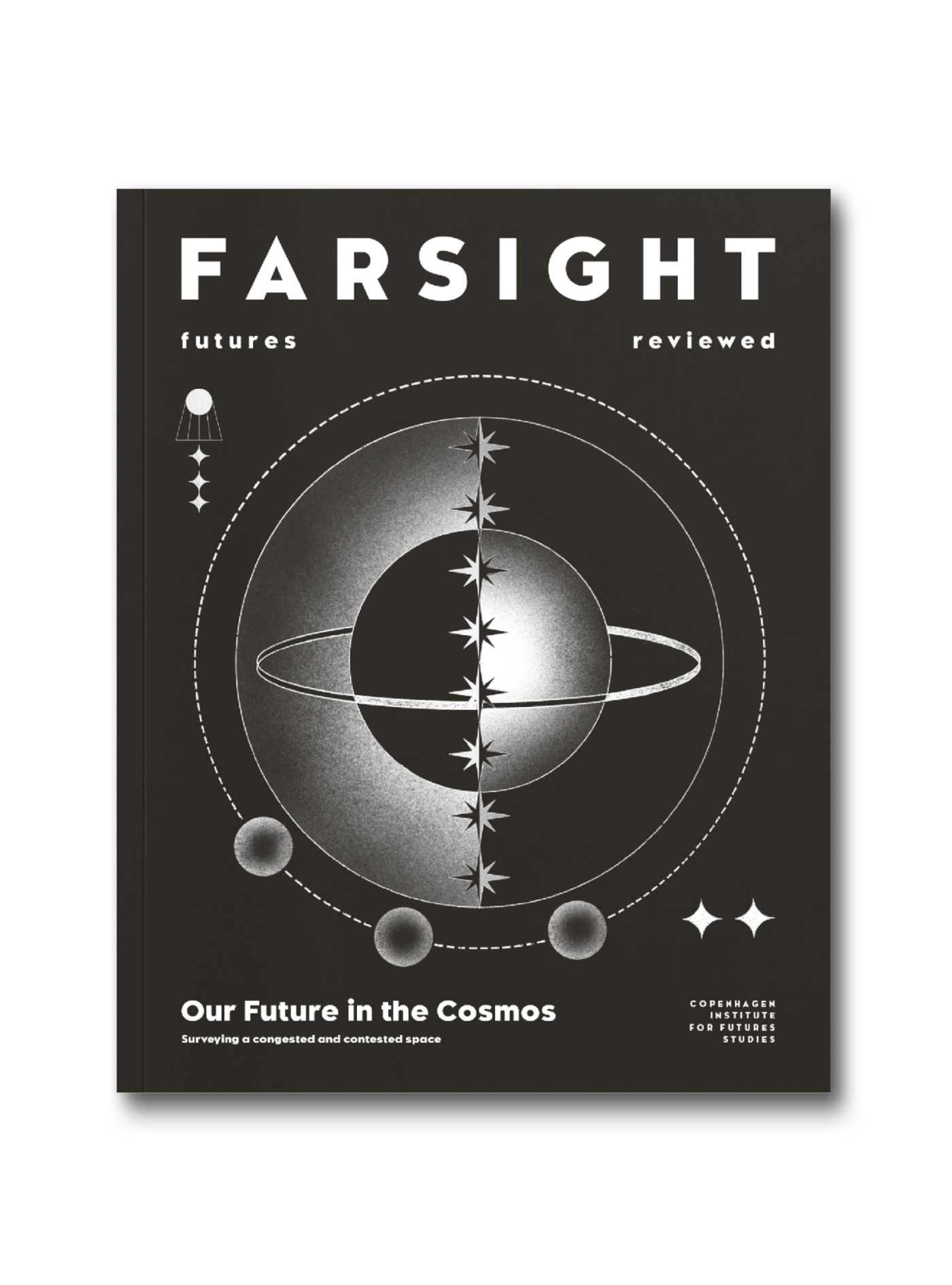
In turn, we use cookies to measure and obtain statistical data about the navigation of the users. You can configure and accept the use of the cookies, and modify your consent options, at any time.

With recreational spaceflight taking off, onlookers are questioning whether something so grand can ever be for the many.
Photo: SpaceX
Ever since I was a little girl I have always wanted to go to space,” Keisha Schahaff says. “When my grandfather told me about Neil Armstrong, all I could do was imagine myself up there as well.”
Schahaff, an Antiguan entrepreneur, went on a life-altering trip in August 2023 after having won a pair of tickets that would take her to a destination not many of us have ever gone to – or probably will: space.
She, along with her daughter who she brought with her on the trip, became the first astronauts from Antigua and Barbuda and the first mother daughter duo to venture beyond Earth. Aboard the GALACTIC 2, entry to which normally comes with a price tag of $450,000, they made the journey reaching 55 miles above the planet’s surface. It was, for her, a profound experience that made her see the world in a different light. “I started thinking of all these questions: What else is out there? Why am I even on this planet?” she explains. “It made me realise that if we do what’s right for our planet and humanity in the present moment, we know for sure we will always have a future.”

Broaden your horizons with a Futures Membership. Stay updated on key trends and developments through receiving quarterly issues of FARSIGHT, live Futures Seminars with futurists, training, and discounts on our courses.
become a futures memberAscending beyond the stratosphere, Keisha Schahaff and her daughter joined the exclusive group of less than 1,000 people who have gone to space, and an even smaller group of people who have gone there not as professional astronauts, but as tourists.
Space tourism marks a potential new chapter in the history of human spaceflight, a story which began with Yuri Gargarin’s historic journey to space in 1961. Back then, during the Cold War, national pride was a driving force behind the race for space exploration, spurred on by the question of “who will do it first?” There’s been a noticeable change in the air lately. Although the Artemis mission, launched in 2022, may not have caused the same fervour as its sibling Apollo did in the 1960s, we nevertheless find ourselves in the midst of a new space age – or rather a new space race. What makes this one different from that of the 1960s is that space is no longer solely an arena for nations to outdo each other.
It used to be the space agencies of the US and the Soviet Union that drew headlines in the race to do things first. Today, nations increasingly share the playing field with the likes of Elon Musk, Jeff Bezos, and Richard Branson, entrepreneurs whose expansions into space are driven more by personal ambitions than national or scientific ones.
Yet despite the increasing privatisation of human spaceflight, there’s a long way to go before it reaches an entirely commercialised state, says Dr. Annette Toivonen, Senior Lecturer of space tourism at Haaga-Helia University of Applied Sciences.
She explains that private and government sectors are usually very much linked together when it comes to space exploration, adding that this is true for traditional tourism as well. It would be a mistake to view human spaceflight as something that will be either a private or government-funded endeavour in the future. What’s more likely is that it will be characterised by a mix of private-public partnerships, a model which has been gaining prevalence across the industry recently.
Case in point: the story of SpaceX’s success cannot be told with omission of how the company has historically been a beneficiary of public funds in the form of US government contracts. A large chunk of this funding has come via collaborations with NASA to create space vehicles such as the Falcon 9 and Dragon, which can subsequently be provided to private clients. NASA’s Commercial LEO Development Programme has also funded private space station projects and has contracted SpaceX for, among other things, transportation of astronauts and development of equipment for the Artemis mission. Like Virgin Galactic and Blue Origin, SpaceX is also in the space tourism business. In 2022, the company sent three paying civilians to the ISS, charging each of them a hefty ticket price of $55 million for the journey.
Although trips of this kind have become relatively more frequent and common in recent years, they aren’t exactly anything new. The era of commercial space tourism can be said to have begun already in 2001, when Dennis Tito became the first private individual to pay his way off Earth. The American entrepreneur is reported to have dished out $20 million for an eight-day trip to the ISS, where he was taken aboard the Soyuz TM-32 along with two Russian cosmonauts. Since then, a handful of wealthy individuals have followed in Tito’s footsteps, either going on trips to the ISS or participating in sub-orbital spaceflights.
A recent milestone was reached in July 2021, when Jeff Bezos crossed the Karman Line 100km above the Earth’s surface aboard a Blue Origin flight, the first fully automated spaceflight carrying civilian passengers, days after Richard Branson’s failed attempt. Later in 2021, Elon Musk’s Inspiration4 introduced the first orbital spaceflight involving only private citizens. Today, Richard Branson’s Virgin Galactic takes the lead in the number of civilians shipped into space, having scheduled four civilian trips in the second half of 2023 alone.
Schahaff’s journey to space was aboard one of these crafts. Her decision to participate in the sweepstake through which she won her tickets was spurred by a commercial she saw during a flight, featuring a smiling Richard Branson asking, “Would you like to go to space?”
Sponsored by the non-profit organisation Space for Humanity, the purpose of trips like Schahaff’s, the organisation writes on their website, is to “expand access to space for all of humanity.” Upon their return, space tourists make a commitment to “leveraging that experience for the collective good,” something which the non-profit believes will be helped along by the tourists having experienced the so-called ‘Overview Effect’ – the cognitive shift that can occur when viewing Earth from space. The effect has been described by astronauts as a deeply emotional and transcendent state of awe that instils a newfound appreciation and increased sense of connection to other people and to the planet. In some cases, it has even been described as provoking a transformative change in values and understanding of the self.

Explore the world of tomorrow with handpicked articles by signing up to our monthly newsletter.
sign up here“I definitely became a different person after seeing Earth from above,” Schahaff reflects. “Something synced in me. I became aware that the planet is a living, breathing organism, and that we’re just guests living on its surface. It is gifted to us,” she says.
Although organisations like Space for Humanity are working to democratise space travel by expanding access to it, besides the lucky few ordinary people like Schahaff, space tourism remains a niche pastime for those who can afford the eye-watering ticket prices. In this public display of wealth and exclusivity, the kind of life-changing insights into the splendour and fragility of Earth that the Overview Effect can produce will be available only to those with the deepest pockets.
Perhaps this steep barrier of access is not such a bad thing. Ironically, the kind of trip that will lead to this profound appreciation of our planet also comes with significant environmental costs. The satellite and space market research firm NSR has estimated that a 90-minute spaceflight – the kind that will take you beyond the stratosphere – generates emissions equivalent to a ten-hour commercial air flight while carrying fewer than ten passengers. As Toivonen stresses, adding any new emission-heavy tourist activities to an already unsustainable sector may be ill-timed. Nonetheless, she sees the eventual expansion of the space tourism industry as inevitable, pointing to how it’s not fundamentally different from other forms of luxury travel. “Tourism is a human drive that I don’t think is going to fade away. A big part of the tourism industry is already far from ethical or fair as most people cannot afford it,” she says.
Instead of advocating for an outright ban, Toivonen suggests that global legislation for space travel could not only help mitigate environmental impacts but also be an aid in addressing grey areas regarding unethical or exclusionary practices, to ensure “some kind of fairness for the rest of us,” as she puts it.
Certainly, we shouldn’t let today’s challenges limit tomorrow’s opportunities. While space tourism currently has little scientific value, primarily catering to the demands of a small and wealthy segment of travellers, it could – like space exploration tends to do – potentially bring spillover effects that could improve our lives on Earth. Space, in general, can certainly help secure a future that better reflects our commitment towards the Earth and one another.
“No matter what you choose to do, there is always going to be an effect. We need to understand what that effect is, and how we can still do this in a balanced way so that we’re not exploiting,” Keisha Schahaff tells me at the end of our talk.
Traveling to space can heighten our understanding of our place in the cosmos and the fragility of Earth, as it did for Schahaff. Yet perhaps recognising this truth shouldn’t require all of us to jet off into the cosmos and admire our planet from afar.

This is an article from FARSIGHT:
Our Future in the Cosmos
Grab a copy here